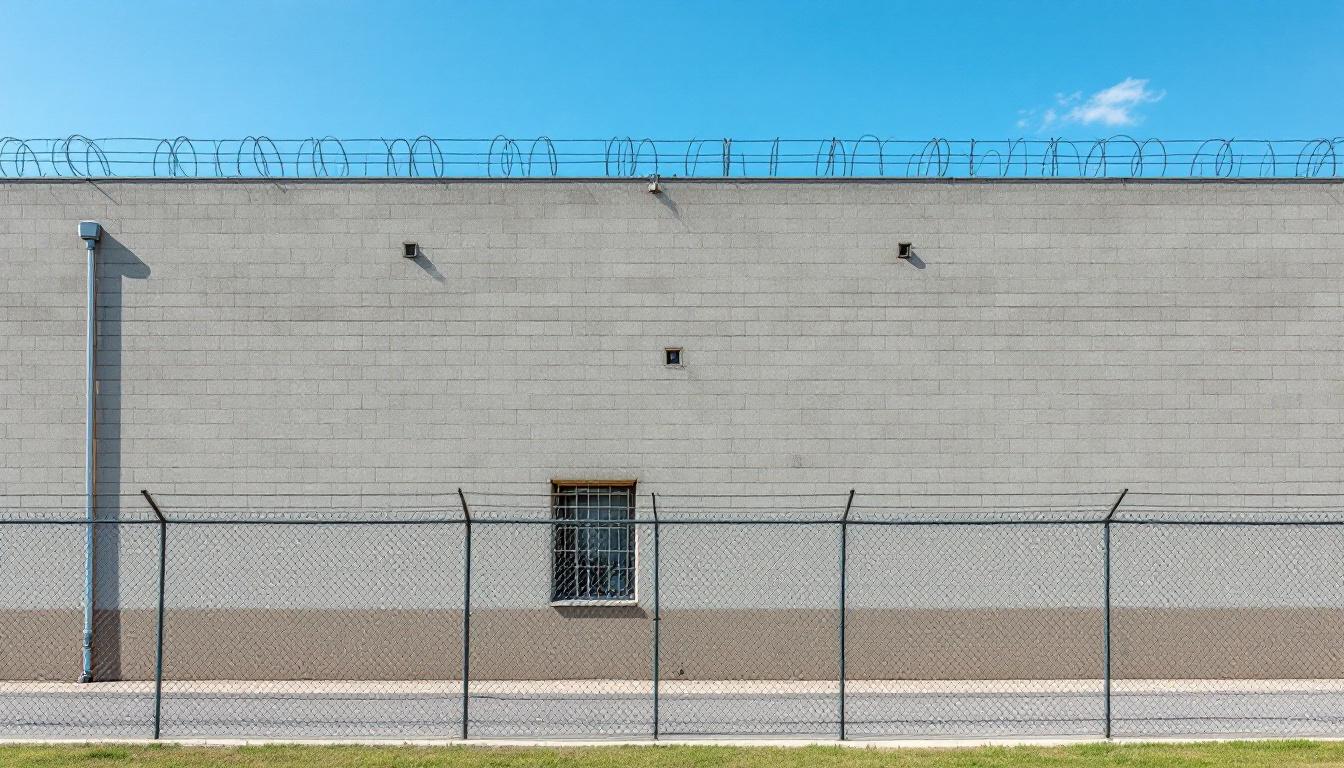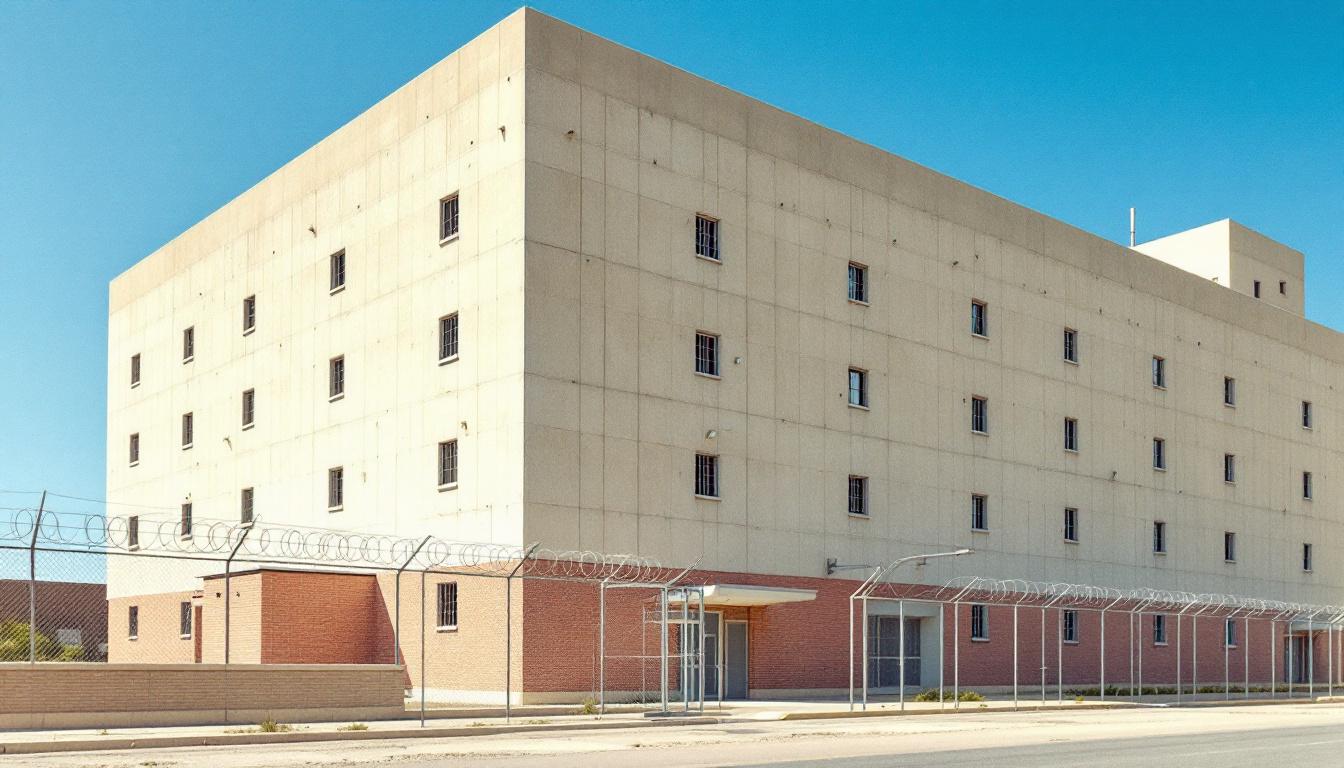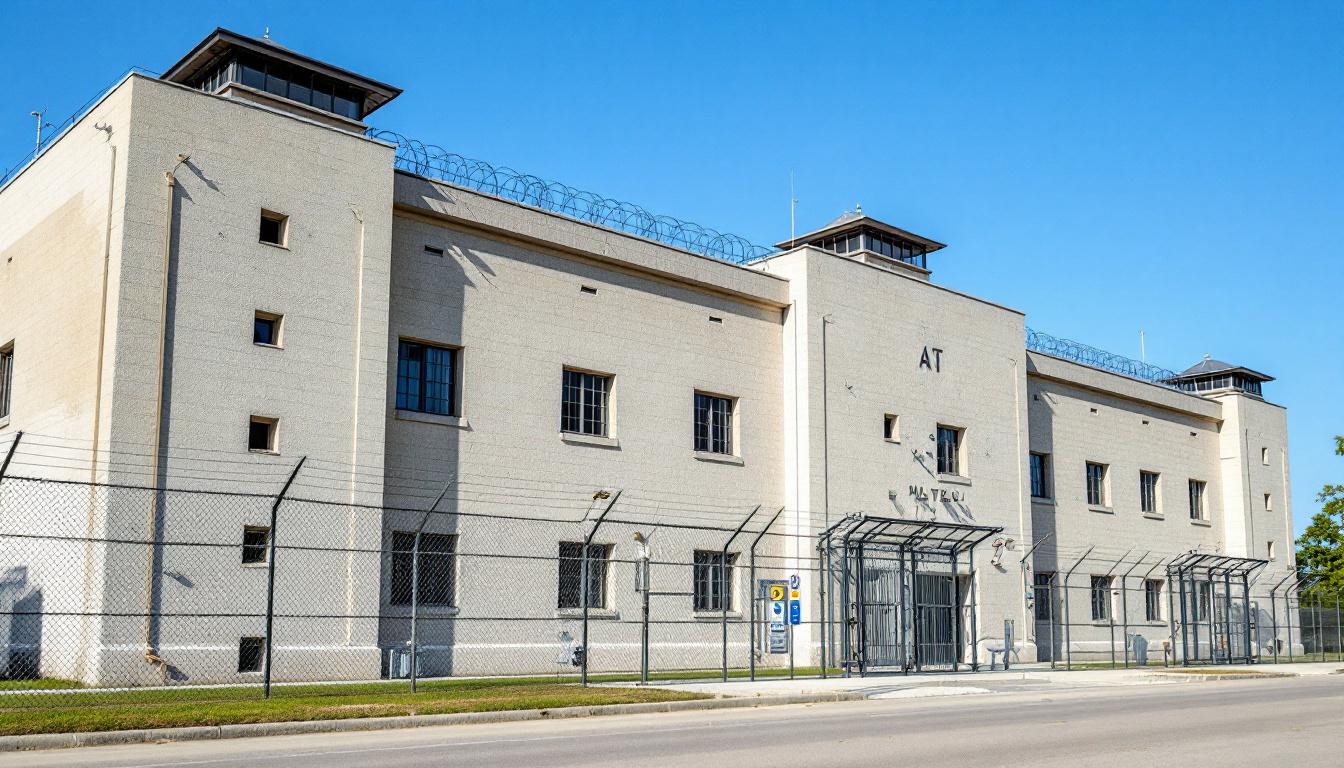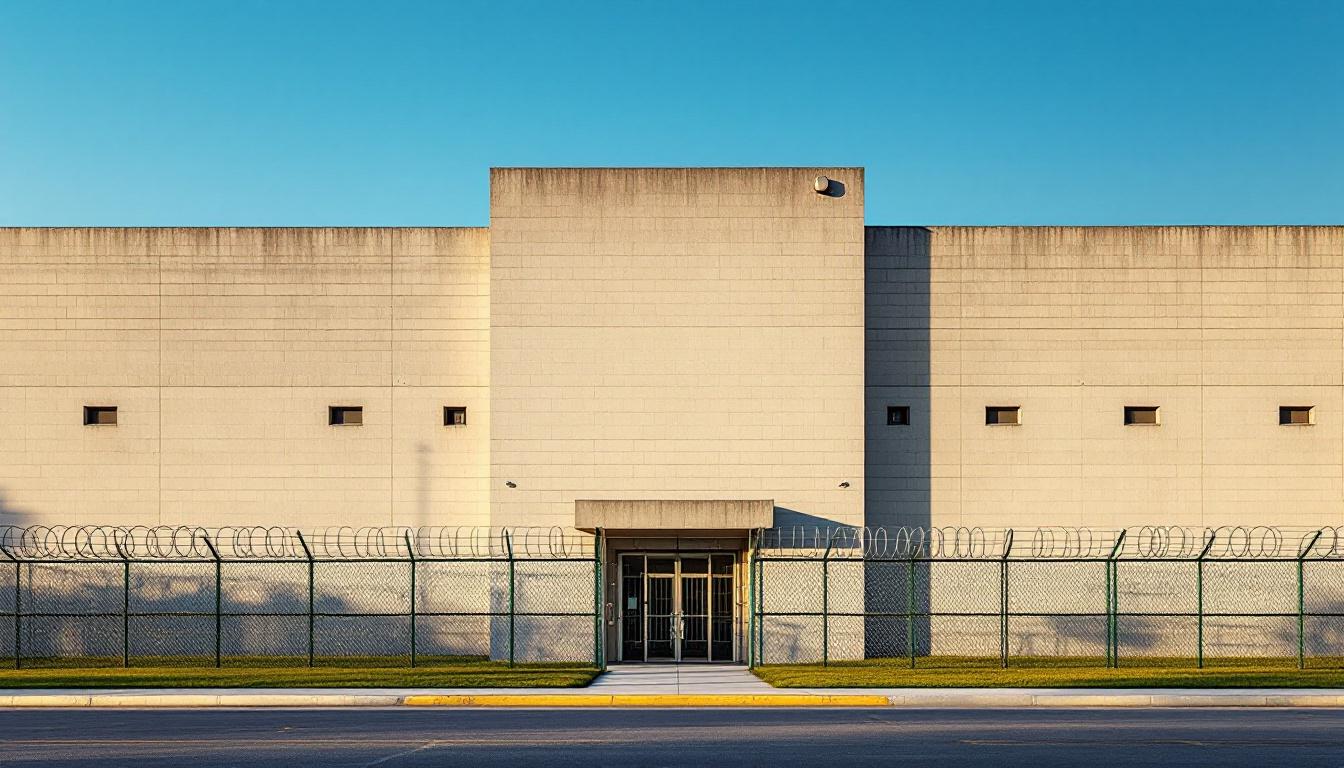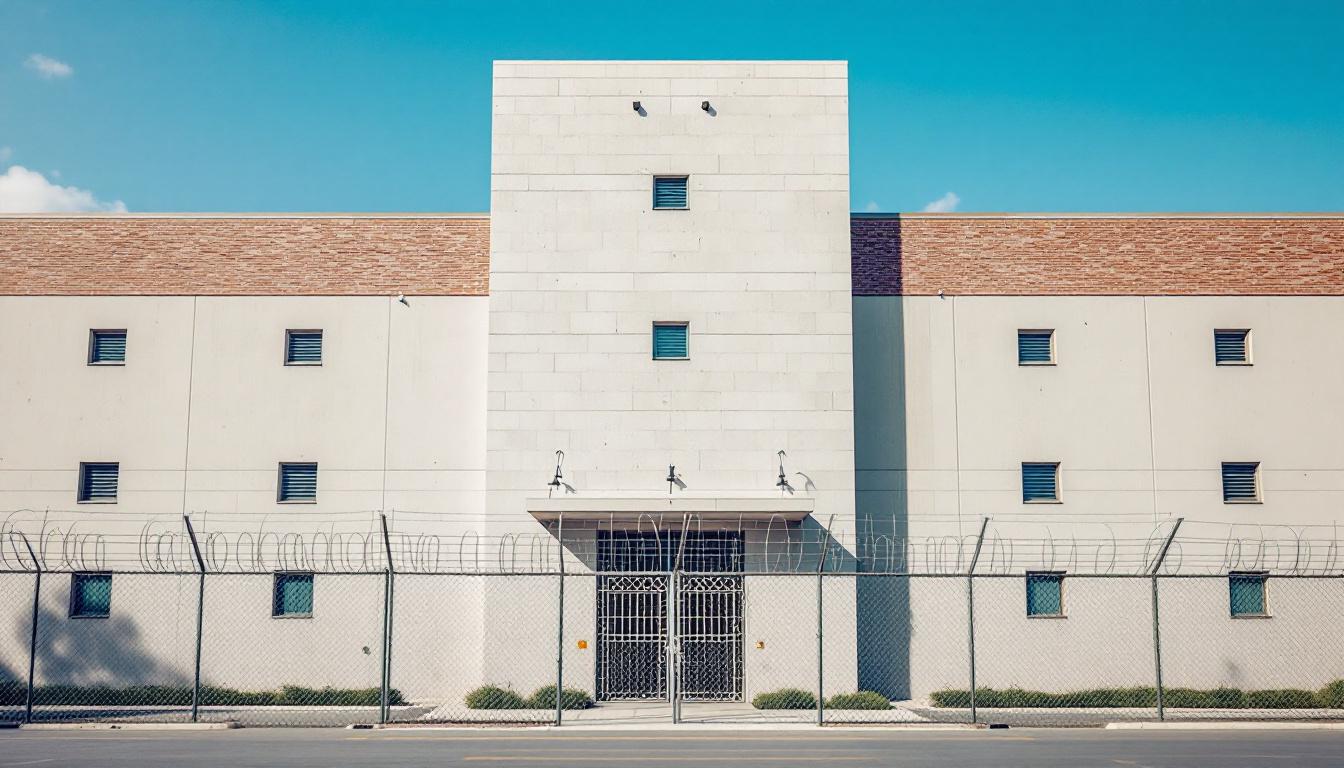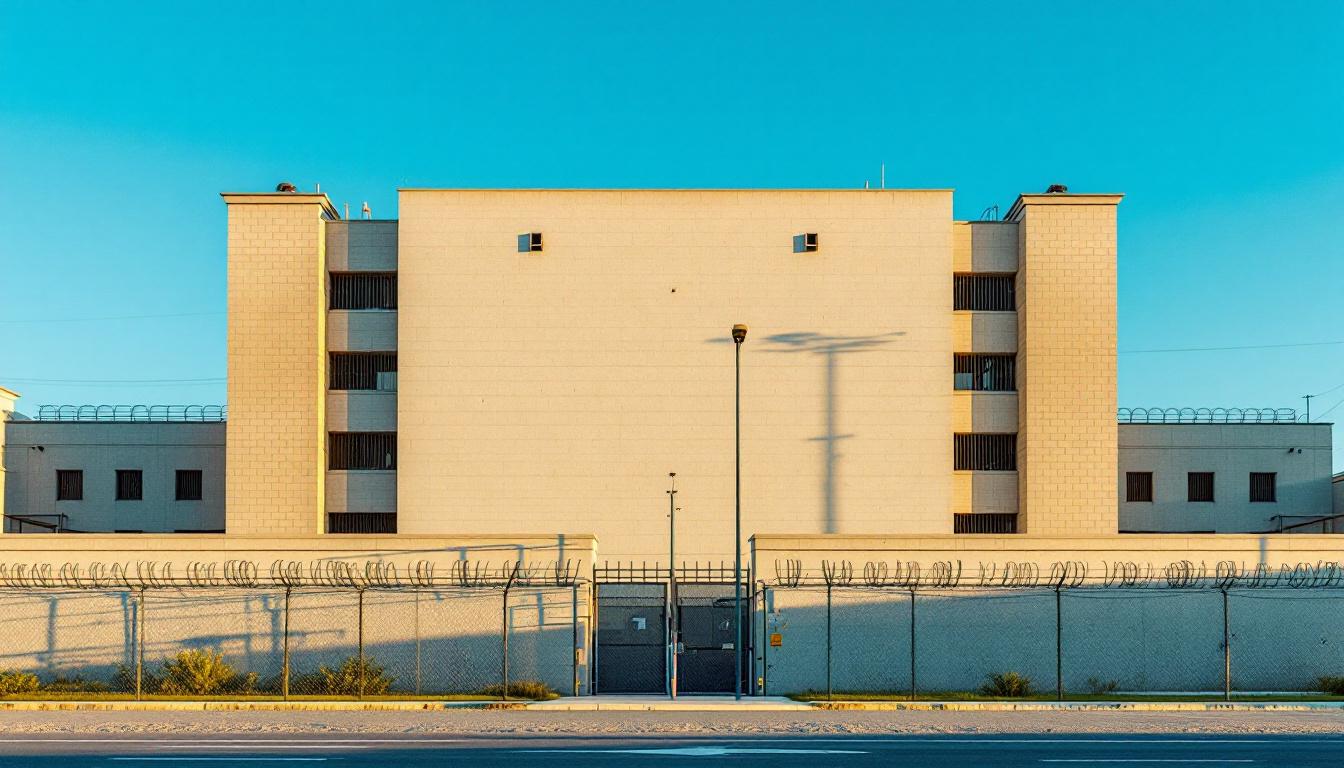
Quick Navigation
How to contact an inmate at CCA Central Arizona Detention Center
This comprehensive guide will walk you through how to connect with an inmate at CCA Central Arizona Detention Center. Follow the steps below to find an inmate and send letters and photos:
- Search for the inmate using our search tool below
- Create your account or log in to Penmate
- Write your message (up to 6,000 characters)
- Send instantly - inmates receive printed copies daily
Find an Inmate
Search for an inmate to start communicating today
Tip: You can search by first name, last name, or inmate ID number
To contact a person at CCA Central Arizona Detention Center start by searching for the person on the official facility website. Perform a search by following these steps:
- Step 1: Enter their first name and last name into the search form and click "Search"
- Step 2: Locate their inmate record
- Step 3: Write down their Inmate ID and any housing information provided
Important! Be sure to enter the person's full name. Nicknames should not be used.
How to Send Messages to Inmates

You can use your phone or computer to send emails, letters, and photos to an inmate. Messages are sent electronically to inmate tablets or kiosks at the facility. If you would like to send a message, start by searching for an inmate at CCA Central Arizona Detention Center.
Sending Photos and Postcards

A great way to send love and support to a loved one at CCA Central Arizona Detention Center is to send photos and postcards. It only takes a few minutes to send photos from your phone and it makes a huge difference. You can also mail postcards with words of support and inspiration, or design your own postcard for special moments like birthdays and holidays.
Important! Be sure not to send any explicit photos or they may not be approved by the facility. You can also use a photo printing app like Penmate to make sure your photos are printed at the correct size (4x6 or 3x5) and are mailed according to the rules and regulations of CCA Central Arizona Detention Center.
Frequently asked questions about CCA Central Arizona Detention Center
-
How long does it take to deliver a message?
If you're sending an email message your letter is usually delivered within 24-48 hours. For messages sent via mail you should expect delivery within 3-7 days. All messages will need be approved by CCA Central Arizona Detention Center.
-
How much does it cost to send a message to CCA Central Arizona Detention Center?
You can send a message free using your phone or mail a message via USPS for the price of a $0.60 stamp and envelope. You can also purchase credits or e-stamps from services starting at $1.99.
-
What services can I use to contact an inmate at CCA Central Arizona Detention Center?
Penmate
You can use Penmate to send letters and photos to an inmate from your phone. It's an easy way to stay in touch during your loved one's incarceration. Use the inmate locator to find an inmate's location and contact information, then you can send messages within a few minutes.
Securus messaging
Securus may be another option for communicating with an inmate at CCA Central Arizona Detention Center. You can create a friends and family account and purchase credits to send messages. All messages will be reviewed and must be approved by the facility.
JPay
Some county jails and state prisons may support sending messages with JPay. You must register an account with the system, find your loved one, and purchase stamps to send messages. For some locations you can also attach photos.
Smart Jail Mail
You may also check if Smart Jail Mail is available at CCA Central Arizona Detention Center. Smart Jail Mail is operated by Smart Communications and has contracted with some state and county jails. After purchasing credits, your messages and photos are sent to the facility, printed out, and then handed out to your loved one.
-
What is the mailing address of CCA Central Arizona Detention Center?
Mailing address:
CCA Central Arizona Detention Center
1155 N Pinal Pkwy Ave
Florence, AZ 85132
Phone: (520) 868-3668Business hours:
- Monday: 8:15 AM – 5:30 PM
- Tuesday: 8:15 AM – 5:30 PM
- Wednesday: 8:15 AM – 5:30 PM
- Thursday: 8:15 AM – 5:30 PM
- Friday: 8:15 AM – 5:30 PM
- Saturday: Closed
- Sunday: Closed
-
What are the visiting hours at CCA Central Arizona Detention Center?
Visiting hours at CCA Central Arizona Detention Center vary by housing unit and security level. Generally, visits are scheduled on weekends and holidays, with some facilities offering weekday visits. Contact the facility directly at (520) 868-3668 or check their website for the current visiting schedule. Visits typically last 30-60 minutes and must be scheduled in advance.
-
What items are prohibited when sending mail to CCA Central Arizona Detention Center?
Prohibited items typically include: cash, personal checks, stamps, stickers, glitter, glue, tape, staples, paperclips, polaroid photos, musical or blank greeting cards, hardcover books, magazines with staples, and any items containing metal or electronics. Only send letters on plain white paper with blue or black ink. Photos must be printed on regular photo paper (no Polaroids). Always check with CCA Central Arizona Detention Center for their specific mail policies.
-
How do I send money to an inmate at CCA Central Arizona Detention Center?
You can send money to an inmate at CCA Central Arizona Detention Center through several methods: 1) Online using JPay, Access Corrections, or the facility's approved vendor, 2) Money orders mailed directly to the facility with the inmate's name and ID number, 3) Kiosks located in the facility lobby, or 4) Over the phone using a credit or debit card. Fees vary by method, typically ranging from $2.95 to $11.95 per transaction.
-
Can I schedule a video visit with an inmate at CCA Central Arizona Detention Center?
Many facilities now offer video visitation as an alternative to in-person visits. At CCA Central Arizona Detention Center, video visits may be available through services like Penmate, Securus Video Connect, GTL, or ICSolutions. Video visits typically cost $10-20 for 20-30 minutes and must be scheduled in advance. You'll need a computer or smartphone with a camera and reliable internet connection. Contact the facility for their specific video visitation policies and approved vendors.
-
What identification do I need to visit an inmate at CCA Central Arizona Detention Center?
All visitors must present valid government-issued photo identification such as a driver's license, state ID, passport, or military ID. Minors must be accompanied by a parent or legal guardian who can provide the minor's birth certificate. Some facilities require visitors to be on the inmate's approved visitation list, which may require a background check. Contact CCA Central Arizona Detention Center for specific ID requirements and visitor approval procedures.
-
How can I find out an inmate's release date?
To find an inmate's release date at CCA Central Arizona Detention Center, you can: 1) Use the online inmate search tool if available, 2) Call the facility's records department, 3) Contact the inmate's case manager or counselor, or 4) Have the inmate provide this information during a call or visit. For privacy reasons, some facilities only release this information to immediate family members.
Facility Overview
Contact Information
CCA Central Arizona Detention Center1155 N Pinal Pkwy Ave
Florence, AZ 85132
Phone: (520) 868-3668
Official Website

About CCA Central Arizona Detention Center
Serving the high desert community of Adelanto and the broader Pacific region, this CA correctional facility operates through a comprehensive framework that prioritizes both security and systematic rehabilitation processes. USP Victorville functions as a federal institution where structured daily routines create pathways for inmates services that typically encompass educational advancement, vocational skill development, and behavioral modification programs. The facility's approach to offender management integrates multiple support systems designed to address the complex needs of its population while maintaining the safety standards required in a correctional environment.
Located in San Bernardino County's expansive desert landscape, the correctional facility draws from regional resources to deliver programming that may include literacy courses, substance abuse counseling, and job readiness training. The institution's operational philosophy generally emphasizes gradual reintegration preparation through tiered programming levels that allow individuals to progress based on participation and behavioral indicators. Mental health services, medical care, and chaplaincy programs often form additional pillars of support within the facility's holistic approach to incarceration management.
Through its positioning within the federal correctional system, USP Victorville typically maintains connections with community organizations and educational institutions that can facilitate continuity of services upon release. The facility's structured environment incorporates work assignments, recreational activities, and family visitation protocols that aim to preserve important social connections while individuals serve their sentences. This multifaceted operational model reflects contemporary correctional practices that balance accountability measures with rehabilitation opportunities designed to reduce recidivism and support successful community reentry.
Programs & Services
Personal transformation and skill development form the cornerstone of rehabilitative services at USP Victorville, where comprehensive programming addresses the multifaceted needs of inmates preparing for successful community reintegration. The facility's approach to rehabilitation emphasizes building practical competencies alongside fostering personal growth, recognizing that meaningful change requires both educational advancement and the development of essential life skills. Through carefully structured initiatives, inmates may access resources designed to enhance their cognitive abilities, professional qualifications, and emotional well-being.
Educational services typically encompass a broad spectrum of learning opportunities, including foundational education initiatives that help inmates strengthen their academic foundations and pursue advanced certifications. Financial literacy programming often provides crucial instruction in budgeting, credit management, and economic planning—skills that prove invaluable upon release. In addition to this, civic education components may offer insights into legal rights, community responsibilities, and democratic participation. Vocational training services complement these academic pursuits by delivering hands-on instruction in marketable trades, enabling inmates to develop technical expertise that translates directly into employment opportunities in various industries.
Support services extend beyond traditional classroom learning to address the practical and psychological aspects of rehabilitation. Employment readiness programming typically focuses on resume development, interview techniques, and workplace communication skills, while specialized training in areas such as plumbing may provide inmates with specific trade certifications. Rehabilitation programs often include therapeutic services that address underlying behavioral patterns and substance abuse issues, creating a foundation for sustained personal change. These comprehensive offerings work synergistically to equip inmates with the tools, knowledge, and mindset necessary for productive citizenship upon their return to society.
Daily Life & Visitation
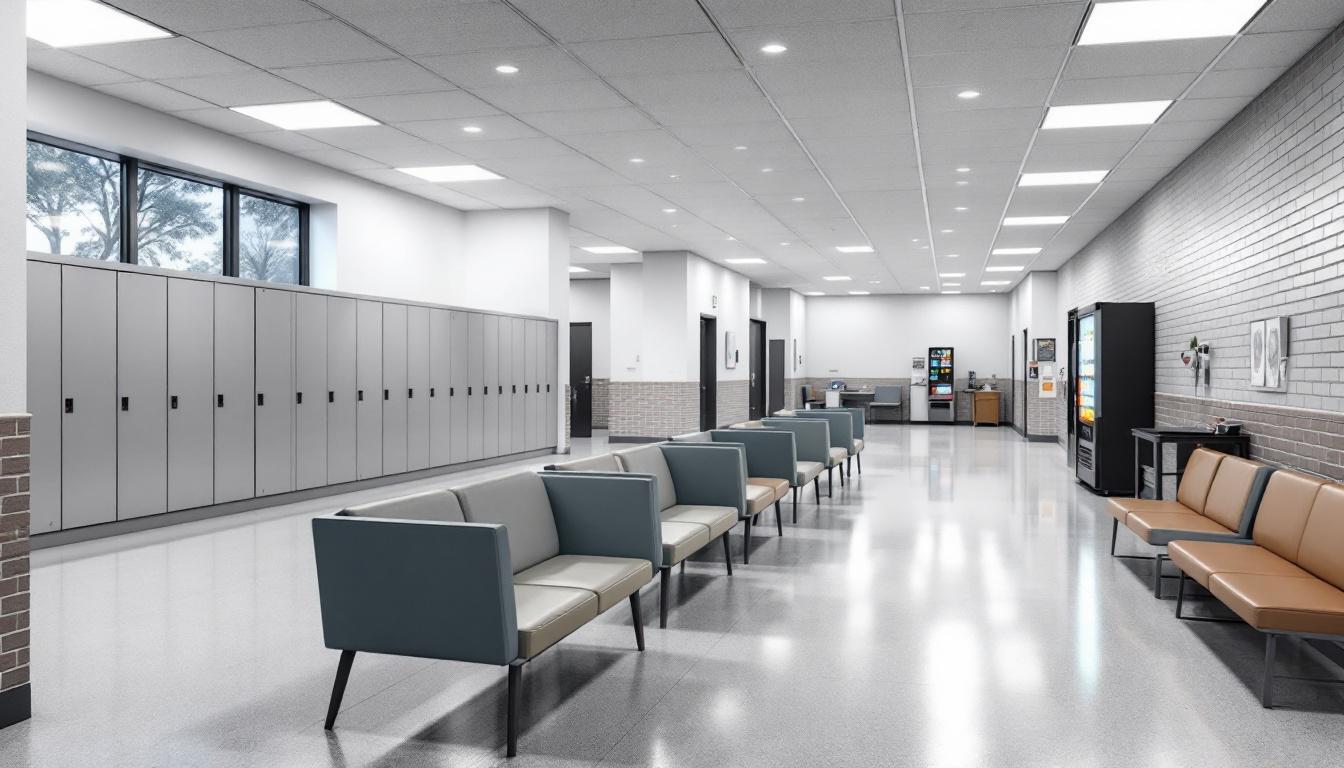
The concrete corridors and steel-reinforced housing units of USP Victorville create a highly structured environment where inmates now navigate their daily existence within clearly defined boundaries and routines. Each morning typically begins with formal count procedures, followed by breakfast service in designated dining areas where inmates regularly gather in assigned shifts. The facility's operational schedule generally revolves around security protocols that dictate movement between housing units, work assignments, and common areas throughout the day.
Living accommodations within the facility typically consist of multi-person cells or dormitory-style housing units, where inmates adapt to sharing limited personal space and storage areas with their assigned cellmates or roommates. The physical environment generally includes basic furnishings such as bunks, small desks, and storage lockers, while inmates may purchase additional comfort items through the commissary system when funds are available. Despite this controlled setting, inmates often develop routines around maintaining their living spaces and managing their personal belongings within the facility's property restrictions.
In addition to this structured living environment, USP Victorville typically provides various programming opportunities that help inmates maintain connections with family members and develop skills during their incarceration. Recreation periods usually include access to outdoor exercise yards, indoor fitness equipment, and organized sports activities, while educational and vocational programs generally offer structured learning environments. Visitation policies typically allow approved family members and friends to maintain contact through scheduled visits, phone calls, and correspondence, providing inmates with essential emotional support systems that help them adapt to the facility's demanding daily routine.
Ready to Connect?
Start communicating with your loved one today
Search for an Inmate

